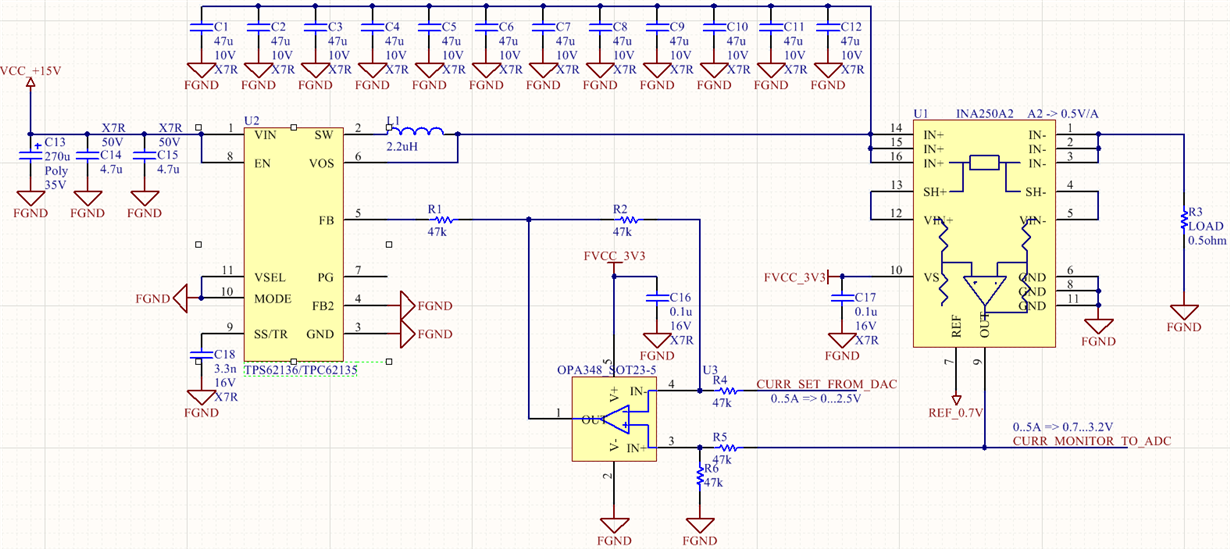Other Parts Discussed in Thread: TPS62135, , INA250, OPA348
Hello
Proj. description: to design resistive switching wire heater psu with regulated current. The load resistance is extremely low
Load resistance from 0.5 ohm
- Current regulated from 0.2 to 4.0 Amp
- Max output volatge at least 5V.
- Least possible Voltage ripple
- Maximum effciency for least heat dissipation (will work in sealed/closed/isolated env.)
output voltage requirement is to swing to ner 0V asthis wire heater would need about 0.1V output to feed 200mA in to 0.5ohm.
There is a pair questions:
1. what is the difrence between TPS62136 and TPS62135.
2. would the TPS62136 be stable with added V to I conversion on INA250 and OPA348? specified INA250A2 BW ~50kHz and OPA348 ~1Mhz.



